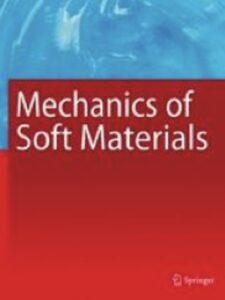Publications

A quantitative comparison of devices for in vivo biomechanical characterization of human skin
Authors: Havar J. Junker 1, Bettina Thumm 1, Sascha Halvachizadeh 2, Edoardo Mazza 1, 3
Affiliations:
- Present address: Institute for Mechanical Systems, Department of Mechanical and Process Engineering, ETH Zurich, Leonhardstrasse 21, Zurich, 8092, Switzerland
- Department of Trauma, University Hospital Zurich, Ramistrasse 100, Zurich, 8091, Switzerland
- Empa, Swiss Federal Laboratories for Materials Science and Technology, Uberlandstrasse 129, Dubendorf, 8600, Switzerland
Journal: Mechanics of Soft Materials - July 2023, Volume 5, Issue 1, Article no. 5 (DOI: 10.1007/s42558-023-00053-w)
-
Field & Applications:
- Medical
- Skin / Dermatology
- Reliability
Non-invasive skin characterization devices are emerging as a valuable tool in clinical skin research. In recent years, the range of available experimental techniques and methods used to determine the biomechanical properties of skin has increased considerably. Although a substantial amount of work has been devoted to assessing the working principle of macroscopic skin characterization devices individually, a rationalization and comparison between them is still lacking. This motivated the present study, which aimed to characterize and compare three commonly used working principles: suction, dynamic shear loading, and indentation. A synthetic model system with tunable mechanical properties was used to assess the three devices, and the results rationalized based on corresponding finite element models. In vivo measurements were performed on healthy volunteers to investigate the capability of differentiating the biomechanical properties of skin at different body locations, and to assess the intra- and inter-rater reliability of each device. The present comparative analysis indicates that the analyzed functional principles perceive the stiffness of human skin differently, with relevant implications for the interpretation of the respective measurement results.

Figure 2. An overview of the principle of the dynamic shear force device. a Sketch of the shear probe attached to the skin. b An acceleration curve generated by the device used to calculate the dynamic stiffness. The parameter amax needed for the calculation of the stiffness descriptor S has been indicated
Keywords: skin biomechanics, MyotonPRO, SkinFibroMeter, Nimble
In this study, three different devices for in vivo skin characterization were analyzed and compared. Using synthetic materials and corresponding FE simulations, a framework for rationalizing the different functional principles was established. The subsequent analysis showed that the apparent moduli detected by the different devices on the synthetic materials were in excellent agreement. Moreover, all three devices were able to reliably detect a thin, stiff coating on a soft substrate. When performing measurements on healthy volunteers, the agreement between the devices was partially lost, as both the relative values and magnitude of the skin stiffness detected in each location differed between the devices. It is clear that the different devices respond differently to the complex structure of the skin at each anatomical location, which ultimately motivates a careful interpretation of the descriptors and the comparison between them.


